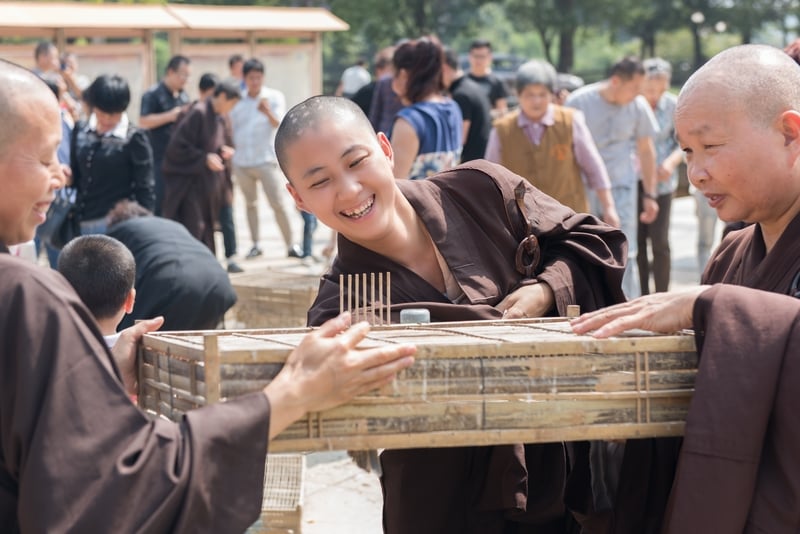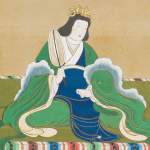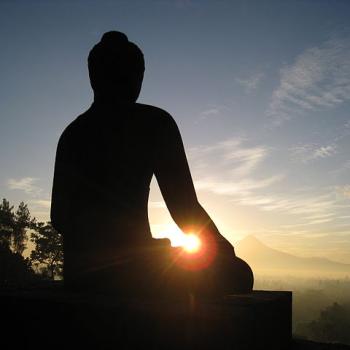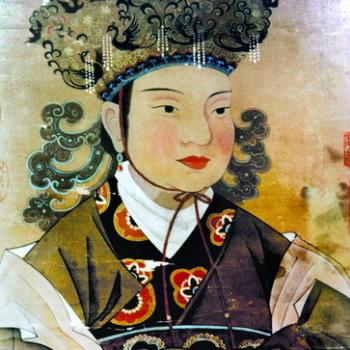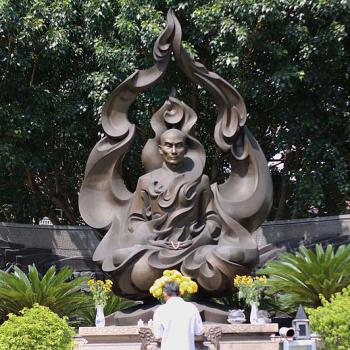For centuries the only fully ordained Buddhist nuns anywhere were in east Asia — China, Korea, Japan, Vietnam, and Taiwan. The Theravada nuns orders of India and Sri Lanka faded away in the 11th century and were never revived. It appears nuns’ orders never reached Tibet and other parts of Asia until relatively recently. But the Mahayana nuns’ order of east Asia thrived through the centuries to the present day. And the Buddhist establishments in east Asia were no more supportive of nuns than they had been elsewhere in Asia, I don’t believe. What made the difference?
Some background: Buddhism reached China in the 1st century BCE. The first monks who carried the Buddha’s teachings into China probably were from Gandhara and Bactria, or roughly today’s northern Pakistan and Afghanistan. The monks followed Silk Road merchants east into northern China. Some monks from India also traveled to China, usually by taking ships to the southern China port city of Guangzhou.
For a while the new, foreign religion met with skepticism in China. By the 3rd century Buddhism had gained some acceptance. With the help of scholars and translators such as Kumarajiva (344–413 CE), by the 5th century Buddhism had put down strong roots in China.
The First Chinese Buddhist Nuns
Zhu Jing Jian (ca. 292–361) is recorded as the first Chinese woman to receive ordination as a novice nun. She was ordained, the records say, by an Indian teacher in Luoyang in 317. Later, she founded a convent in Chang’an. This was during a time of war and upheaval in China, when others were fleeing to south China to escape the violence. Zhu Jing Jian and her sister nuns would not have been able to receive full ordination, however. Full ordination requires a quorum of fully ordained nuns as well as monks to be present at the full ordination of nuns. (See The Buddhist Nun Controversy.)
In the 5th century some nuns from Sri Lanka traveled to China to be that quorum. The first full ordinations of Chinese Buddhist nuns took place in about 433 CE, thanks to the Sinhalese nuns. It’s believed the ordinations of all Buddhist nuns of east Asia today are part of an unbroken lineage that began with nuns from Sri Lanka. Note that today Mahayana nuns of east Asia are helping the nuns of Sri Lanka receive full ordinations. (See The Determined Nuns of Sri Lanka.) The circle is unbroken.
It’s recorded the first Chinese woman to receive full Buddhist nun ordination was named Huiguo. Huiguo had already lived as a novice nun for many years. And she had founded a convent, with support from the governor of Shandong Province, east China. She died shortly after she was ordained.
The Lives of Chinese Buddhist Nuns
We know less about the history of Chinese Buddhist nuns than we know about monks. The biographies and writings of many prominent monks have been preserved, but what little we know about nuns comes mostly from their interactions with monks. The chroniclers of China’s history simply paid no attention to the nuns. A few remarkable women managed to be remembered, even so.
See, for example, Thinking of Mother Moshan, one of the Early Zen Masters. Moshan Liaoran lived in the 9th century, in the latter part of the Tang Dynasty. Her primary teacher was a man named Gaoan Dayu, which was unusual. Most male Buddhist teachers did not take women students in those days. But by all accounts Moshan became such a formidible teacher in her own right that monks came to her for teaching as well as nuns. One of her male students, Guanzhi Zhixian (d. 895), also was a student of a very famous master named Linji Yixuan (d. 866). Guanzhi said, “I received half a ladle at father Linji’s place, and half a ladle at mother Moshan’s. Ever since I took that drink, I’ve never been thirsty.” But while Linji’s teachings were recorded and preserved, Moshan’s were not.
We do know that Buddhist nuns orders gave women in China the option to live a life other than that of a wife or servant. For some, it opened a door to a life of scholarship that before had been for men only. Some nuns were recognized for their mastery of the Chinese classics as well as of Buddhist scriptures, for example. Recognized or not, the Chinese Buddhist nuns’ order persevered.
Why the Chinese Buddhist Nuns Order Survived
The first Song Dynasty emperor, Taizu (r. 960-976), was a strict Confucian who thought it improper for men and women to interact outside the home. He overturned the old rule that said the ordinations of nuns required the participation of fully ordained monks and nuns. Nuns alone could ordain nuns, Taizu said. This decree may have saved the nuns’ orders in China from the fate of their sisters in Sri Lanka and elsewhere. “The Chinese nuns’ lineage, freed from dependence on the monks’ order for ordination, survived, while Buddhist nuns outside China did not,” writes Zen teacher Grace Schireson in her book Zen Women: Beyond Tea Ladies, Iron Maidens and Macho Masters (Wisdom Publications, 2009), page 99.
Note that Song Dynasty China was not a supportive place for women. The practice of footbinding was widespread, as was the practice of selling small daughters if food was scarce. Yet the nuns’ orders flourished.
Most Chinese Buddhist monasteries relied on the patronage of the emperor and local nobility to keep going. It’s a good guess that convents received fewer donations from the usual patrons. However, the pattern in much of east Asia was that upper class women supported the nuns. Often widows of wealthy families chose to become nuns rather than be pushed into another marriage, and they were able to provide endowments to convents. Some very wealthy widows built their own convents. It’s also the case that some nuns chose to live very simply, in huts and hermitages.
Chinese Buddhist Nuns Today
The 20th century was not kind to Buddhism in China. Mao Zedong’s Cultural Revolution, which began in 1966, targeted all Buddhist institutions for destruction. One prominent scholar declared in 1972 that Buddhism in China was dead. Chairman Mao’s harsh policies were moderated after he died. The government of China today ostensibly supports Buddhism but also keeps it under tight control. Yet there are still Buddhist nuns in China. The Chinese Buddhist nuns order perseveres.
